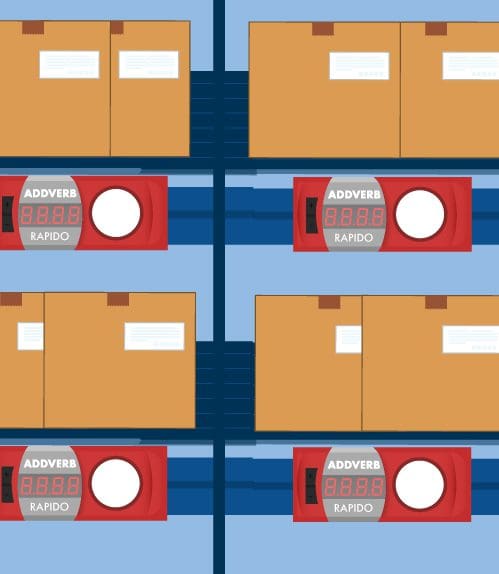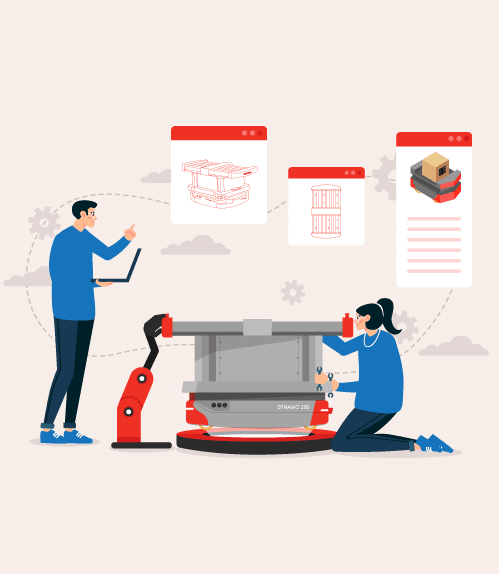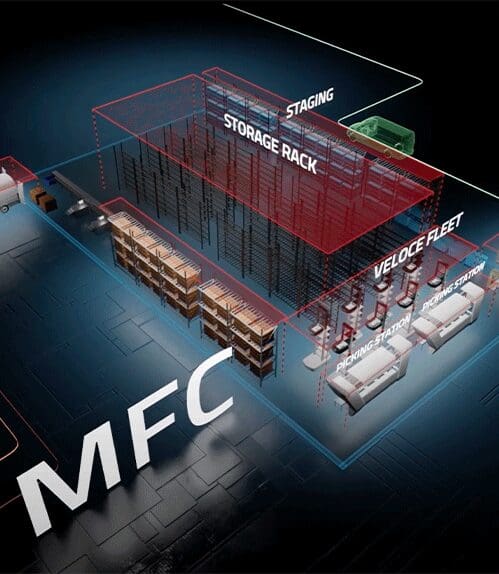The onset of the Industrial Revolution augmented the Mobile Robots Application across different industrial functions. However, the latest developments and the pace of business operations have made it almost a mandate for many companies to adopt these bots into their everyday operations. Mobile robots, descendants of driverless vehicles that took birth in the grocery warehouse of Mac Barret, found their place not only within the four walls of the industrial warehouse but across different applications like military, security, healthcare, domestic, surveillance, and entertainment industries.
Despite their ubiquitous presence across the spectrum, we will discuss the most popular Mobile Robots Applications and their associated structures here.
Impact of Mobile Robotics: From Assembly Lines to Hospital Floors
Shelf Units – Semi-automated installation (manual intervention)
Used to transport semi-finished or finished goods between productions, between production and warehouse, and/or in warehouse logistics. This is especially useful for automobile or electronics industries where the manufacturing of main products involves the assembly of thousands of spare parts.
Conveyor band/belts
This is one of the popular applications of mobile robotics with a conveyor top module attached to it. It is used majorly to transport material between fixed conveyor bands/belts, which could be between a robotic depalletisation unit to a shelving unit, or from a palletising unit to a dispatch unit, or between production lines or from the production line to delivery. These are usually fully automated solutions.
Robotic Arm
A mobile robot mounted with a bin-picking robot, popularly used for automatic picking solutions. This solution ensures high picking accuracy and is used for picking fast-moving goods with small order sizes and high volumes. This solution coupled with pick-to-light, makes it popular in the Paper Industry.
Paper Industry
Paper roll handling was one of the important jobs to be performed, given the sensitivity of the material. Conventional manual handling of paper rolls often leads to damage to the outer layers of the roll, up to 10 cm of the diameter of the roll!
This led to the adoption of automated guided vehicles for material handling and transportation of paper rolls and pallets of sheeted paper as early as the 1970s. With the evolution of Mobile robots and flexibility, they have numerous applications.
In the paper industry, vertical paper roll warehousing and horizontal delivery of paper rolls to printing machines are very typical. To facilitate this, mobile robots are integrated with the down-ender system.
Mobile Robots for Hospitals
Another interesting area of application of mobile robotics is Hospitals, where they are used for carrying surgical/medical supplies, linens, medicines, needle trays, and other generic items. Their ability to interact with one another, collision avoidance capabilities with other mobile robots, humans, and obstacles like doors, walls, etc., make them very flexible to use in multi-speciality hospitals where nurses and other helping staff walk for kilometers every day carrying essential items.
Electronics Industry
Characterised by the highest quality and product design, the electronics industry consists of several serial components of high quality. During manufacturing and shipping, it is of paramount importance that these spare parts need to be dealt with extreme cleanliness and orderliness. The weights to be transported are usually standard boxes of size 600 mm*400 mm.
In these production sites, flexibility is key, as both the layout and the processes often change over the course of ongoing optimisation. Mobile robots, with their reliability and flexibility of operation, fit into the demands of this industry and have been playing a vital role in material transportation for quite some time, and the trend is only increasing.
Food & Beverage Industry
Globally, this industry is booming at a skyrocketing growth rate with numerous players, multiple SKUs, and extending into every nook and corner. This continuous growth of the sector leads to a great utilisation of available space, and the very nature of the products demand quick supply chain operations. Especially the beverage industry is subjected to enormous price pressure worldwide. Hence there is an acute need for operational cost savings, and even the very marginal price differences can define the fate of the business.
This is where automation and mobile robots come into the picture. Popularly piggyback models of mobile robots can be used to perform pallet transportation. These mobile robots are equipped with conveyors to manage pallet pick up and drop off laterally onto stationary conveyor equipment. These robots do offer a high amount of operational flexibility.
Way Forward
Currently, mobile robots are in heavy or unusual payload applications; however, flexibility is at the core of their functionality, and they are quickly penetrating into new industries with each passing day. Mobile Robots Applications will soon become the harbingers for the realisation of ‘Lean Manufacturing’ that connects islands of automation across different business functions.
Find out how Numina Group and Addverb entered into a strategic North American partnership to expand the deployment of Addverb’s autonomous mobile robots in North American warehouses. This partnership aimed to provide innovative technology solutions for faster and smarter warehouse order fulfilment automation, starting with our Dynamo series of robots.
Dynamo, an indigenously developed mobile robot from Addverb can handle multiple payloads from 50Kg to 1500Kg. Based on Natural navigation and advanced control systems, this is one of the best in the industry.
Bottom Line
Autonomous Mobile Robots have transformed industries, from manufacturing to healthcare. Their adaptability and precision are reshaping operations and enhancing efficiency. As we move forward, these robots will continue to play a pivotal role, connecting automation across industries and driving progress towards leaner, smarter manufacturing.








